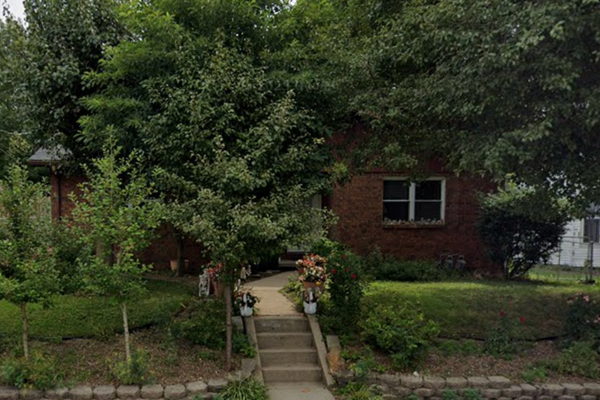
The Reserve Bank’s decision to raise the cash rate on Tuesday to 3.85% suggests a board completely lost to logic and we should be thankful that soon the decision to change rates will be taken out of its hands.
Last month, when the RBA decided after 10 straight meetings to keep the cash rate steady, it presented a number of reasons. The chief was that “a range of information, including the monthly CPI indicator, suggests that inflation has peaked in Australia. Goods price inflation is expected to moderate over the months ahead due to global developments and softer demand in Australia.”
It also noted that “monetary policy operates with a lag and that the full effect of this substantial increase in interest rates is yet to be felt”.
In effect, the worst was behind us, but there was still a lot of impact from the 350 basis points worth of rate rises still to hit the economy, so let’s pause and see how things go.
So how did things go?
Well, a couple weeks afterwards, the latest quarterly and monthly inflation figures confirmed that inflation has peaked.
If the graph does not display click here
Not only that but it was slowing quicker than expected, and economists were quite upbeat.
Westpac’s Justin Smirk noted that the trimmed mean – a key measure of underlying inflation that the RBA watches closely – “surprised coming in softer than expected”. He also observed that “many of these increases were smaller than they have been in recent quarters”.
He also found that “the current disinflationary force, particularly for goods, appears to be greater than we thought”.
If the graph does not display click here
AMP’s Diana Mousina similarly noted that the trimmed mean was “lower than expected” and that “the momentum in inflation is now slowing and the March quarter figures are below the RBA’s latest inflation projections”.
Even better, she observed, “the forward-looking inflation indicators … continue to suggest further downside to inflation.”
So all good. Well done, the RBA, on pausing!
And so of course on Tuesday the RBA decided to raise the cash rate.
Sorry, what?
How could it come up with that decision given what it said in April and the new data we have seen since then?
Well, it needed to change a few things.
First, it dropped any mention of the monthly inflation figures and instead focused on the quarterly figure arguing that “inflation in Australia has passed its peak, but at 7 per cent is still too high and it will be some time yet before it is back in the target range”.
Well, fine, but that was if anything better than expected a month ago.
As for expectations, a month ago the bank noted that “the central forecast is for inflation to decline this year and next, to around 3 per cent in mid-2025”. Nothing had changed in the intervening four weeks except on Tuesday the bank removed the “to around” part. It stated that “inflation is expected to be 4½ per cent in 2023 and 3 per cent in mid-2025”.
So in a month the RBA became more confident that inflation would get back to 3% by mid-2025 and yet still decided rates needed to go up.
To top it off, on Tuesday the RBA revised down its forecast for GDP growth this year from 1.6% to 1.25%.
Seriously, what is going on in Martin Place?
On Tuesday the RBA noted that “goods price inflation is clearly slowing due to a better balance of supply and demand following the resolution of the pandemic disruptions”.
Given that in April it was hopeful that this would occur suggests things were going well. But no, now services prices are key – something it did not mention last month except to note that “services price inflation remains high in many economies”.
Now they matter because “services price inflation is still very high and broadly based and the experience overseas points to upside risks”.
But here’s the thing about those service prices – most of them are not due to excess demand but public sector and government pricing:
If the graph does not display click here
Is a higher cash rate going to bring down medical and hospital service prices, or education costs? The second biggest contributor to inflation in March was tertiary education costs, which, as Mousina noted, were “up significantly related to an index from the government’s job-ready graduate package”.
Gee, the interest rate rise will help slow that, eh?
The RBA also noted that “unit labour costs are also rising briskly, with productivity growth remaining subdued”.
It sure is nice that the RBA cares about productivity but productivity growth is so erratic it is hard to understand how it would affect any monthly rate decisions (especially since the latest figures came out in March!).
If the graph does not display click here
As it is, there have been no new wage price index figures since the April meeting, and the latest fortnightly data from the Fair Work Commission shows little sign of wages bounding away in enterprise agreements:
If the graph does not display click here
Heck, even the RBA noted that “at the aggregate level, wages growth is still consistent with the inflation target”.
But pfft. Let’s jack those rates!
We shouldn’t ignore just how massively the RBA has stepped on the monetary policy brakes. The rate rise is well beyond anything we have experienced in the past 30 years:
If the graph does not display click here
Laughably, the RBA concluded its statement by noting that “a significant source of uncertainty continues to be the outlook for household consumption. The combination of higher interest rates, cost-of-living pressures and the earlier decline in housing prices is leading to a substantial slowing in household spending”.
Gee, ya think?
And yet the bank suggests it might still raise rates further.
At this point though, who the heck knows. You may as well read tea leaves as look for understanding of further rates movements from the governor’s statement – because it took a speech he gave at a dinner in Perth to discover that rebounding house prices were a reason the bank raised rates – despite it not being mentioned at all in his official statement.
The release of the RBA review last month recommended taking away the power to change rate from the current board.
Bring on the new board and bring on greater transparency and explanations of monetary policy from the Reserve Bank.
Greg Jericho is a Guardian columnist and policy director at the Centre for Future Work







